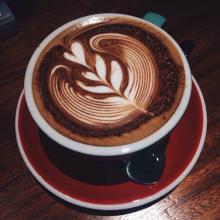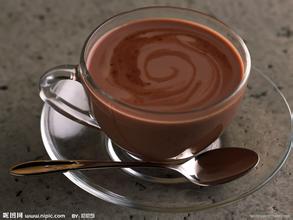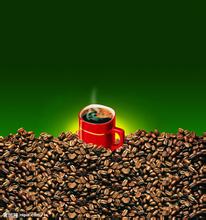How many coffee fruits are processed per season and the planting environment are introduced
An introduction to the average number of coffee fruits produced by a coffee tree per season and its planting environment
Coffee fruit contains two seeds, namely coffee beans. The two beans are connected face to face with each other on one side of the plane. Each coffee bean has a thin outer film, which is called silver skin, and its outer layer is covered with a yellow outer skin, called endocarp. The whole coffee bean is wrapped in a sticky pulp to form a soft and sweet coffee pulp, and the outermost layer is the outer shell of the coffee tree whose first flowering period is about three years, with white flowers with five petals and tube-shaped flowers. there is a faint fragrance of jasmine, and the inflorescences are dense and arranged in clusters. It will wither after two or three days of flowering and begin to bear fruit after a few months. Fruit for the drupe, diameter of about 1.5cm, the initial green, and then gradually turn yellow, mature to red, and cherries are very similar, so called cherry coffee (Coffee Cherry), at this time can be harvested coffee tree ideal planting conditions are: the temperature between 15-25 ℃ temperature climate, and the whole year's rainfall must reach 1500mm-2000mm, at the same time the rainfall time, to be able to match the coffee tree flowering cycle. Of course, in addition to the seasonal rainfall, there should also be fertile soil and good drainage. Fertile soil containing volcanic ash, in addition, although sunlight is an indispensable element for the growth and fruit of coffee, too strong sunlight will inhibit the growth of coffee trees, so various producing areas usually cooperate with the planting of some shade trees. The ideal altitude is 500 to 2000 meters above sea level. It can be seen that the conditions for cultivating high-quality coffee are very strict: sunlight, rainfall, soil, air temperature, as well as the way coffee beans are harvested and the process of making coffee beans will affect the quality of coffee itself.
Although Arabica and Roberta are widely cultivated, there are significant differences between them. Beans are different and tree species are not the same. Therefore, their use is also different. The world's production of Arabica beans is about 70%, while Robosta and others account for 30%.
Arabica can produce rich oil, aroma overflowing, and there will be a very light layer of dark yellow oil floating on the surface. Roberta can produce more grease, but it has a lot of foam and disappears quickly. Roberta contains twice as much caffeine as Arabica. The caffeine content is 2.2-2.4% and 1.1-1.3% respectively. If too much robusta is added to the Italian concentrate, it will taste like a gelatinous drug.
After the fruit is harvested, the skin and flesh must be removed. The endocarp and silver peel are removed to form coffee beans. There are two kinds of methods: drying (natural drying, non-washing) and washing.
Dry type, the operation is relatively simple, the harvested fruit will be spread on the dry ground and basked in the sun for a week or two. The sound of rattling can be heard when it is turned, which means it is dry. Then use the sheller to remove the pulp, endocarp and silver skin of the dried fruit.
This method gives coffee beans a soft sour taste and a mild bitter taste. This method is used in Brazil, Ethiopia, Yemen and other places. Disadvantages: vulnerable to weather, defective beans and foreign bodies are more likely to mix. Therefore, it is necessary to select it carefully before delivery.
In the washing type, the harvested fruit is poured into the sink, the floating matter is removed, the fruit in the water is moved to the pulp removal machine, the skin and pulp are removed, and then put back into the tank to remove the floating matter, the "core" in the water is poured into the fermentation tank, soaked for half a day or one day, the colloid on the surface of the fermented bean is removed, washed, dried or mechanically dried, and the endocarp is removed on the peeling machine to become commercial raw coffee beans.

Important Notice :
前街咖啡 FrontStreet Coffee has moved to new addredd:
FrontStreet Coffee Address: 315,Donghua East Road,GuangZhou
Tel:020 38364473
- Prev

Italian style sunny day caramel macchiato fancy coffee
The practice of Italian sunny day caramel macchiato fancy coffee American coffee: American coffee was born after World War II, when Americans ended the war in Europe, many troops came to southern Europe, they could not drink Italian espresso, so they diluted it with lukewarm water. until today, most Americans use drip filter coffee pots, which is why the drip filter pot is also called the original American coffee maker.
- Next

Cappuccino Coffee Variety characteristics region Flavor description Taste treatment
Cappuccino coffee variety characteristics regional flavor description taste treatment method of mocha coffee in a small cup showing a strong New York flavor preparation method: add 20ml chocolate syrup and very strong deep-fried coffee in the cup, stir well, add 1 tablespoon cream to float on top, cut some chocolate powder for decoration, and finally add some cinnamon bar latte coffee
Related
- Beginners will see the "Coffee pull flower" guide!
- What is the difference between ice blog purified milk and ordinary milk coffee?
- Why is the Philippines the largest producer of crops in Liberia?
- For coffee extraction, should the fine powder be retained?
- How does extracted espresso fill pressed powder? How much strength does it take to press the powder?
- How to make jasmine cold extract coffee? Is the jasmine + latte good?
- Will this little toy really make the coffee taste better? How does Lily Drip affect coffee extraction?
- Will the action of slapping the filter cup also affect coffee extraction?
- What's the difference between powder-to-water ratio and powder-to-liquid ratio?
- What is the Ethiopian local species? What does it have to do with Heirloom native species?

